Themed collection Inorganic Chemistry Frontiers HOT articles for 2017

Highly efficient oxygen evolution electrocatalysts prepared by using reduction-engraved ferrites on graphene oxide
A simple and efficient method was explored for synthesizing efficient ferrite-based OER electrocatalysts by using reduction-engraved ultrafine ferrite nanoparticles on a conductive GO support.
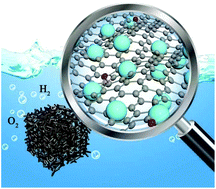
Inorg. Chem. Front., 2018,5, 310-318
https://doi.org/10.1039/C7QI00681K
Nitrogen-rich sandwich-like carbon nanosheets as anodes with superior lithium storage properties
Nitrogen-rich sandwich-like carbon nanosheets used as anodes for LIBs exhibited high discharge capacity and remarkable rate capability.
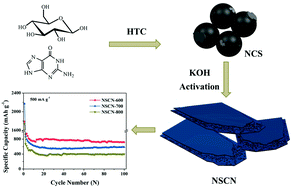
Inorg. Chem. Front., 2018,5, 225-232
https://doi.org/10.1039/C7QI00567A
Environmentally friendly, aqueous processed ZnO as an efficient electron transport layer for low temperature processed metal–halide perovskite photovoltaics
The aqueous processed ZnO/PCBM modified ETLs enable low-temperature processed, thermally stable and efficient perovskite solar cells showing negligible hysteresis.
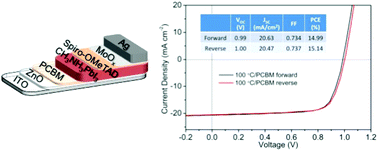
Inorg. Chem. Front., 2018,5, 84-89
https://doi.org/10.1039/C7QI00667E
A new two-dimensional layered germanate with in situ embedded carbon dots for optical temperature sensing
A carbon dots@germanate composite has been synthesized by embedding carbon dots into a double-layered germanate in situ, which exhibits excitation-dependent and temperature-responsive photoluminescence.
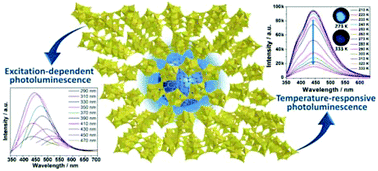
Inorg. Chem. Front., 2018,5, 139-144
https://doi.org/10.1039/C7QI00602K
Encapsulating surface-clean metal nanoparticles inside metal–organic frameworks for enhanced catalysis using a novel γ-ray radiation approach
A facile, efficient and universal γ-radiation strategy has been developed to incorporate surface-clean metal nanoparticles into metal–organic frameworks exhibiting remarkable catalytic activity and stability.
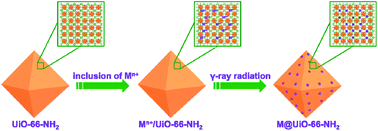
Inorg. Chem. Front., 2018,5, 29-38
https://doi.org/10.1039/C7QI00577F
Mononuclear palladium(II) and platinum(II) complexes of P,C-donor ligands: synthesis, crystal structures, cytotoxicity, and mechanistic studies of a highly stereoselective Mizoroki–Heck reaction
Pallada- and platinacycle complexes exhibit potential orientations in stereoselective transformations and anticancer metallodrugs.
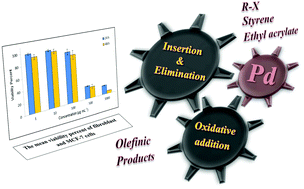
Inorg. Chem. Front., 2017,4, 2107-2118
https://doi.org/10.1039/C7QI00568G
Boosting the ultrastable Li storage performance in electron-sponge-like polyoxovanadates by constructing inorganic 3D structures
Mg2(NH4)2V10O28·nH2O with a 3D extended structure tuned by counter cations has been prepared as an active electrode material for a Li ion battery.
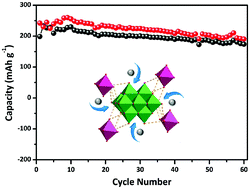
Inorg. Chem. Front., 2017,4, 2012-2016
https://doi.org/10.1039/C7QI00581D
Bond dissociation energy controlled σ-bond metathesis in alkaline-earth-metal hydride catalyzed dehydrocoupling of amines and boranes: a theoretical study
Alkaline-earth-metal could catalyse the dehydrocoupling procedure of N–H and B–H bond due to the low Ae–H bond energy. The direct σ-bond metathesis procedure is proved to be unfavourable.

Inorg. Chem. Front., 2017,4, 1813-1820
https://doi.org/10.1039/C7QI00459A
An inorganic–organic nanocomposite calix[4]quinone (C4Q)/CMK-3 as a cathode material for high-capacity sodium batteries
A novel high-capacity cathode material C4Q/CMK-3 for SIBs shows an initial discharge capacity of 438 mA h g−1 and a capacity retention of 219.2 mA h g−1 after 50 cycles.
![Graphical abstract: An inorganic–organic nanocomposite calix[4]quinone (C4Q)/CMK-3 as a cathode material for high-capacity sodium batteries](/en/Image/Get?imageInfo.ImageType=GA&imageInfo.ImageIdentifier.ManuscriptID=C7QI00453B&imageInfo.ImageIdentifier.Year=2017)
Inorg. Chem. Front., 2017,4, 1806-1812
https://doi.org/10.1039/C7QI00453B
Optimization of thermoelectric properties of n-type Ti, Pb co-doped SnSe
Improved electrical conductivity together with reduced lattice thermal conductivity is achieved for n-type cation-site Ti, Pb co-doped SnSe, resulting in an optimized thermoelectric property.
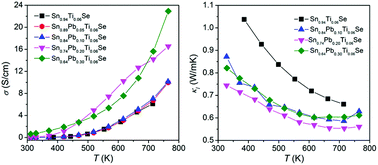
Inorg. Chem. Front., 2017,4, 1721-1729
https://doi.org/10.1039/C7QI00436B
N-Doped hollow carbon nanosheet supported SnO2 nanoparticles
The novel structure of hollow carbon nanosheets could buffer large strains and prolong the cycle life effectively.
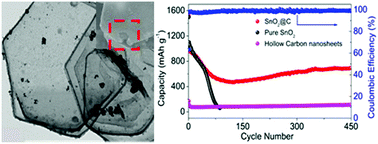
Inorg. Chem. Front., 2017,4, 1742-1747
https://doi.org/10.1039/C7QI00399D
New molecular insights into the stability of Ni–Pd hollow nanoparticles
Molecular dynamics simulations were used to investigate the structural evolution and thermal behavior of Ni–Pd hollow nanoparticles.
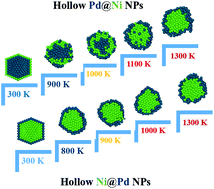
Inorg. Chem. Front., 2017,4, 1679-1690
https://doi.org/10.1039/C7QI00370F
Spinel cobalt–manganese oxide supported on non-oxidized carbon nanotubes as a highly efficient oxygen reduction/evolution electrocatalyst
Ultrasmall cobalt–manganese spinel oxide nanoparticles supported on non-oxidized carbon nanotubes were prepared as a highly efficient bifunctional electrocatalyst for oxygen reduction and evolution reactions.
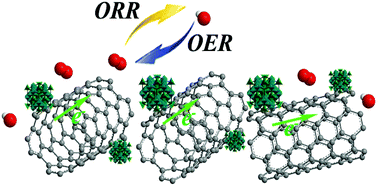
Inorg. Chem. Front., 2017,4, 1628-1633
https://doi.org/10.1039/C7QI00367F
Investigation on electrochemical behaviors of NiCo2O4 battery-type supercapacitor electrodes: the role of an aqueous electrolyte
The electrochemical performance of the as-synthesized mesoporous NiCo2O4 flower-like products as electrode materials for battery-type supercapacitors is systematically investigated in detail.
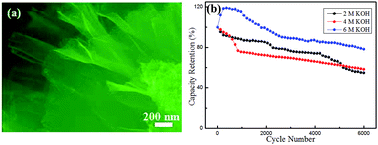
Inorg. Chem. Front., 2017,4, 1642-1648
https://doi.org/10.1039/C7QI00391A
Dielectric and nonlinear optical dual switching in an organic–inorganic hybrid relaxor [(CH3)3PCH2OH][Cd(SCN)3]
[(CH3)3PCH2OH][Cd(SCN)3] exhibits dielectric and nonlinear optical dual switching with reversible phase transition as an organic–inorganic hybrid relaxor.
![Graphical abstract: Dielectric and nonlinear optical dual switching in an organic–inorganic hybrid relaxor [(CH3)3PCH2OH][Cd(SCN)3]](/en/Image/Get?imageInfo.ImageType=GA&imageInfo.ImageIdentifier.ManuscriptID=C7QI00300E&imageInfo.ImageIdentifier.Year=2017)
Inorg. Chem. Front., 2017,4, 1445-1450
https://doi.org/10.1039/C7QI00300E
Tuning the optical, electronic and thermal properties of Cu3NbS4−xSex through chemical substitution
Partial sulfur to selenium substitution in Cu3NbS4−xSex enables fully tunable green band gaps with marginal change in the lattice parameter.
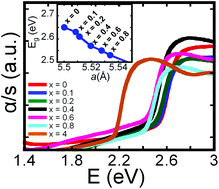
Inorg. Chem. Front., 2017,4, 1493-1500
https://doi.org/10.1039/C7QI00264E
Li2CdGeSe4 and Li2CdSnSe4: biaxial nonlinear optical materials with strong infrared second-order responses and laser-induced damage thresholds influenced by photoluminescence
Two new biaxial, diamond-like semiconductors, Li2CdGeSe4 and Li2CdSnSe4, were prepared via high-temperature, solid-state synthesis.
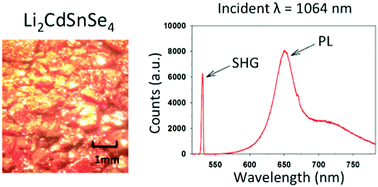
Inorg. Chem. Front., 2017,4, 1472-1484
https://doi.org/10.1039/C7QI00004A
Ferroelectricity in bis(ethylammonium) pentachlorobismuthate(III): synthesis, structure, polar and spectroscopic properties
A brief description of the thermal, structural and dielectric properties of bis(ethylammonium) pentachlorobismuthate(III) ferroelectric with Ps that equals to 1.4 μC cm−2 at 180 K is presented.
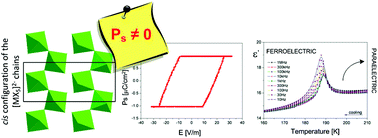
Inorg. Chem. Front., 2017,4, 1281-1286
https://doi.org/10.1039/C7QI00254H
Self-sacrificed two-dimensional REO(CH3COO) template-assisted synthesis of ultrathin rare earth oxide nanoplates
Ultrathin RE2O3 nanoplates are synthesized by a hot-injection method via the in situ formed REO(CH3COO) template.
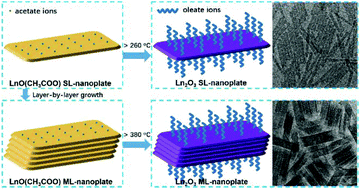
Inorg. Chem. Front., 2017,4, 1182-1186
https://doi.org/10.1039/C7QI00201G
Engineered doxorubicin-calcium@silica nanospheres with tunable degradability for controlled drug delivery
An inorganic nanomedicine based on degradable pure silica is fabricated for controlled drug delivery.
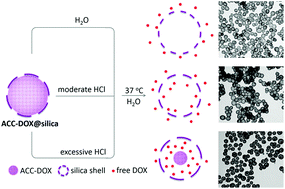
Inorg. Chem. Front., 2017,4, 1135-1140
https://doi.org/10.1039/C7QI00169J
A porous Ni3N nanosheet array as a high-performance non-noble-metal catalyst for urea-assisted electrochemical hydrogen production
The porous Ni3N NA/CC acts as a high-performance and durable electrocatalyst for urea oxidation needing a potential of 1.35 V to drive 10 mA cm−2 water-splitting current in 1.0 M KOH with 0.33 M urea.
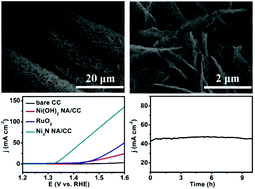
Inorg. Chem. Front., 2017,4, 1120-1124
https://doi.org/10.1039/C7QI00185A
In situ luminescence analysis: a new light on monitoring calcium phosphate phase transitions
In situ luminescence measurements allow monitoring the phase transitions of biologically relevant calcium phosphates with high sensitivity, independent of synchrotron radiation.
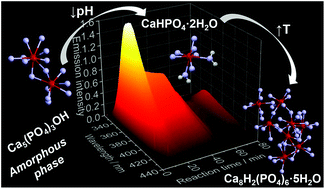
Inorg. Chem. Front., 2017,4, 1157-1165
https://doi.org/10.1039/C7QI00172J
Tunable design of yolk–shell ZnFe2O4@RGO@TiO2 microspheres for enhanced high-frequency microwave absorption
Yolk–shell ZnFe2O4@RGO@TiO2 microspheres with a tunable void size and TiO2 shell thickness possess enhanced high-frequency microwave absorption properties.

Inorg. Chem. Front., 2017,4, 935-945
https://doi.org/10.1039/C7QI00120G
Assembly of four 8-quinolinate-based multinuclear complexes: the effect of substituents on core structures and photoluminescence properties
Four multinuclear complexes with different core structures are synthesized. The core structures and photoluminescence properties of M(II)–quinolinate complexes are controlled by the different substituent groups of ligands.
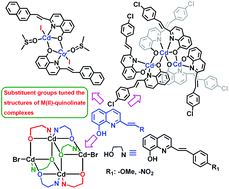
Inorg. Chem. Front., 2017,4, 764-772
https://doi.org/10.1039/C7QI00082K
Synthesis of yellow mesoporous Ni-doped TiO2 with enhanced photoelectrochemical performance under visible light
Ordered mesoporous Ni-doped TiO2 were synthesized by a multicomponent self-assembly process.
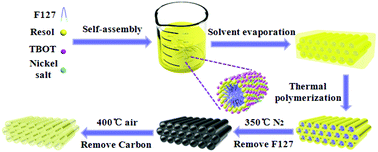
Inorg. Chem. Front., 2017,4, 898-906
https://doi.org/10.1039/C6QI00609D
Dynamic structural flexibility of Fe-MOF-5 evidenced by 57Fe Mössbauer spectroscopy
57Fe Mössbauer spectroscopy reveals unexpected dynamics at the Fe sites in Fe-substituted MOF-5, especially in the presence of nitrogen.
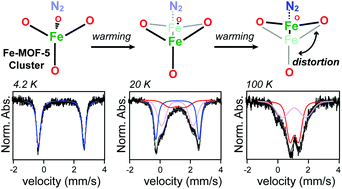
Inorg. Chem. Front., 2017,4, 782-788
https://doi.org/10.1039/C6QI00584E
Porous hollow MoS2 microspheres derived from core–shell sulfonated polystyrene microspheres@MoS2 nanosheets for efficient electrocatalytic hydrogen evolution
Hollow MoS2 microspheres were constructed using monodisperse sulfonated polystyrene (SPS) as the template, and exhibited excellent HER performance.
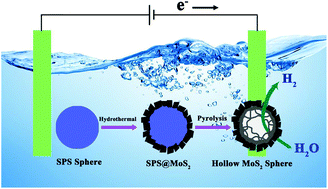
Inorg. Chem. Front., 2017,4, 741-747
https://doi.org/10.1039/C7QI00044H
Enhancing thermoelectric performance of n-type PbSe via additional meso-scale phonon scattering
By introducing mesostructures, the lattice thermal conductivity at 300 K can be reduced from ∼1.3 W m−1 K−1 to ∼1.2 W m−1 K−1, and ∼0.9 W m−1 K−1 to ∼0.6 W m−1 K−1 at 923 K in an n-type PbSe–PbS system.
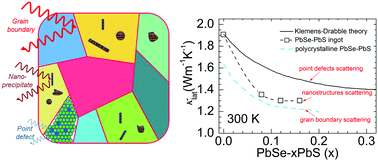
Inorg. Chem. Front., 2017,4, 719-726
https://doi.org/10.1039/C7QI00051K
Enhanced magnetic anisotropy in a tellurium-coordinated cobalt single-ion magnet
Fine-tuning of the ligand field of a series of four-coordinate Co(II) SIMs, yielding the first tellurium-coordinated SIM.
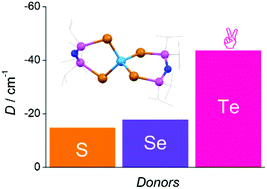
Inorg. Chem. Front., 2017,4, 701-705
https://doi.org/10.1039/C6QI00543H
Hybrid molecular-inorganic materials: a heterometallic [Ni4Tb] complex grafted on superparamagnetic iron oxide nanoparticles
Ni4Tb SMMs grafted onto superparamagnetic IO-NPs retain their magnetic properties intact on the surface of the magnetic substrate.
![Graphical abstract: Hybrid molecular-inorganic materials: a heterometallic [Ni4Tb] complex grafted on superparamagnetic iron oxide nanoparticles](/en/Image/Get?imageInfo.ImageType=GA&imageInfo.ImageIdentifier.ManuscriptID=C6QI00468G&imageInfo.ImageIdentifier.Year=2017)
Inorg. Chem. Front., 2017,4, 595-603
https://doi.org/10.1039/C6QI00468G
Energy-efficient electrolytic hydrogen generation using a Cu3P nanoarray as a bifunctional catalyst for hydrazine oxidation and water reduction
A Cu3P nanoarray acts as a durable bifunctional catalyst for hydrogen evolution reaction and hydrazine oxidation reaction with 100 mA cm−2 at 0.72 V in 1.0 M KOH.
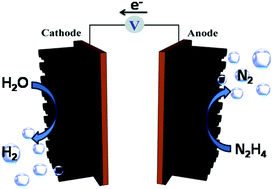
Inorg. Chem. Front., 2017,4, 420-423
https://doi.org/10.1039/C6QI00384B
Sandwich-type silicotungstate modified TiO2 microspheres for enhancing light harvesting and reducing electron recombination in dye-sensitized solar cells
Sandwich-type silicotungstates have been applied in DSSCs where an 0.8% Ni4 modified photoanode exhibited the best performance in enhancing light harvesting and reducing electron recombination.
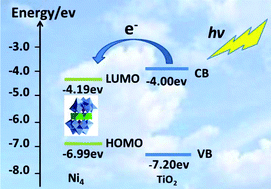
Inorg. Chem. Front., 2017,4, 559-565
https://doi.org/10.1039/C6QI00570E
Encapsulation of an iridium complex in a metal–organic framework to give a composite with efficient white light emission
A blue-emitting MOF served as a host for encapsulating yellow-emitting iridium complex to obtain white light and was used in WLEDs.
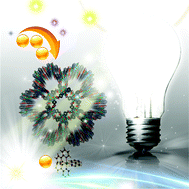
Inorg. Chem. Front., 2017,4, 547-552
https://doi.org/10.1039/C6QI00528D
Exfoliated clay nanosheets as an efficient additive for improving the electrode functionality of graphene-based nanocomposites
A remarkable enhancement of the LIB electrode activity of graphene-based nanocomposites can be achieved via the incorporation of clay nanosheets.
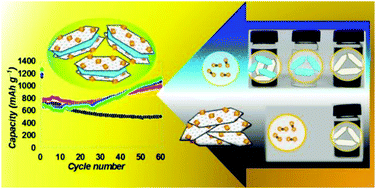
Inorg. Chem. Front., 2017,4, 521-529
https://doi.org/10.1039/C6QI00446F
S,N-Containing Co-MOF derived Co9S8@S,N-doped carbon materials as efficient oxygen electrocatalysts and supercapacitor electrode materials
Co9S8@S,N-doped carbon materials derived from S,N-containing Co-MOFs exhibited superior performance as bifunctional oxygen electrocatalysts and supercapacitor electrode materials.

Inorg. Chem. Front., 2017,4, 491-498
https://doi.org/10.1039/C6QI00403B
Structural stability and thermoelectric properties of cation- and anion-doped Mg2Si0.4Sn0.6
The structural stability of undoped and doped (Sb, Bi, Ca, Zn) Mg2Si0.4Sn0.6 is investigated by high resolution synchrotron PXRD and related to measured physical properties, revealing a stabilizing effect of cation doping.
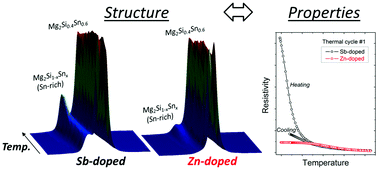
Inorg. Chem. Front., 2017,4, 456-467
https://doi.org/10.1039/C6QI00520A
Fabrication of morphology-preserved microporous carbon from a zeolitic-like porous coordination polymer
A new zeolitic-like microporous coordination polymer (PCP), [Zn2(L)·2H2O]·xguest, was firstly converted to morphology-preserved carbon rods with exclusive micropores and a large surface area for selective gas capture.

Inorg. Chem. Front., 2017,4, 234-240
https://doi.org/10.1039/C6QI00526H
About this collection
Read some of the best research published from Inorganic Chemistry Frontiers in 2017. These articles are recommended by reviewers as being of significant novelty and interest.